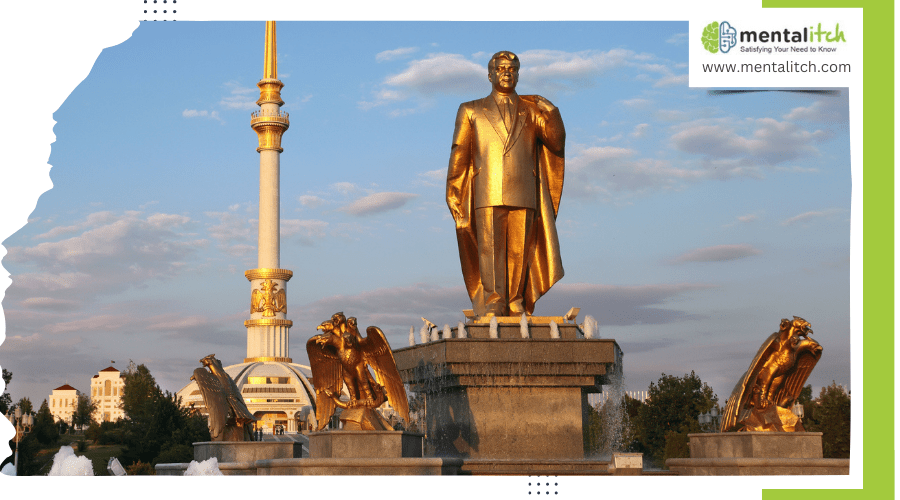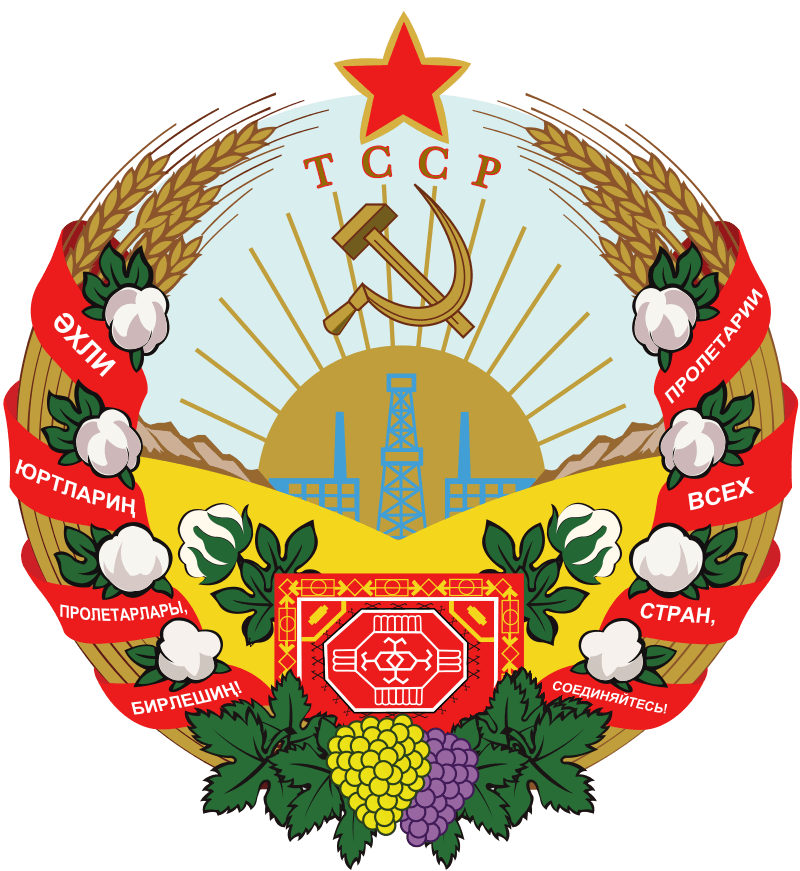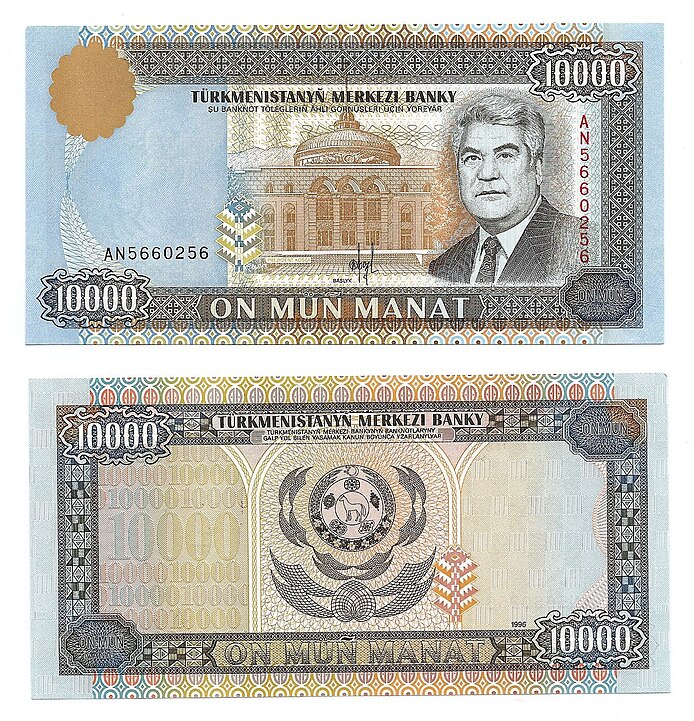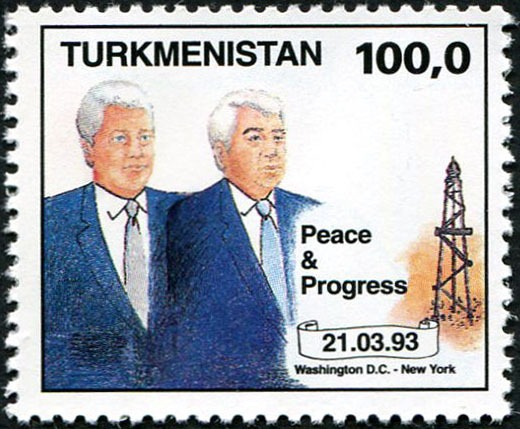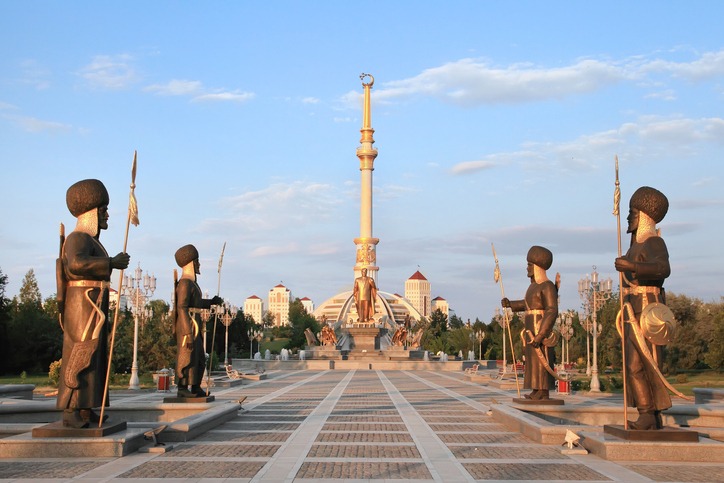You might find it hard to believe, but imagine living in a country where the months of the year are named after the president’s family. That’s exactly what happened in Turkmenistan under Saparmurat Niyazov’s rule. This eccentric decision is just the tip of the iceberg when you look at his regime. From constructing a massive golden statue that rotates to follow the sun, to mandating the study of his personal book, Ruhnama, in schools and universities, Niyazov’s leadership was nothing short of idiosyncratic.
These actions raise intriguing questions about the impact of such unique policies on the nation’s culture and international reputation. If you’re curious about how a leader’s personal whims can shape a country, you’ll find Niyazov’s story fascinating.
Renaming Time and Space
In an unparalleled move, Niyazov didn’t just rule over Turkmenistan; he reshaped its very essence, renaming months, cities, and even the word for bread to mirror his legacy. You’d find April rebranded after his mother, a bold indication to his personal influence seeping into the fabric of time itself. But it didn’t stop there. Niyazov went as far as renaming cities, towns, and even airports, leaving his mark on maps and travel guides. Imagine landing at an airport or strolling through a town that bore the same name as the country’s leader. It was a reality in Turkmenistan.
His ambition to imprint his legacy on the nation didn’t end with geography. Streets, bridges, and monuments shed their traditional Turkmen names in favor of Niyazov’s, altering the landscape to reflect his reign. Even the days of the week weren’t spared from his sweeping changes. And if you thought symbols like the Turkmen flag and anthem would remain untouched, think again. Niyazov’s renaming efforts extended to these national symbols, ensuring his influence was felt in every salute and every verse sung.
The Golden Statue
Moving beyond the renaming of times and places, Niyazov also immortalized his rule through the construction of a 46-foot golden statue of himself in Ashgabat, symbolizing his omnipresence. This wasn’t just any statue; it was designed to always face the sun, embodying Niyazov’s self-given title ‘Turkmenbashi’ or Leader of the Turkmen. You’d think that’s extravagant, but the price tag of approximately $12 million showcases Niyazov’s penchant for the lavish and megalomaniacal even more.
The golden statue didn’t just stand tall in Turkmenistan’s capital; it was a prominent emblem of Niyazov’s cult of personality and his firm grip on authoritarian rule. It’s as if he was watching over Turkmenistan, ensuring his presence was felt everywhere and always. But this wasn’t an isolated project. The statue was part of a broader tapestry of grandiose monuments and projects that Niyazov initiated, each one a testimonial to his extravagant rule and desire to cement his legacy in Turkmenistan’s landscape. Through these efforts, Niyazov didn’t just mark his territory; he created a visual narrative of power, control, and a unique, albeit controversial, form of leadership.
Ruhnama: Spiritual Guidebook
Saparmurat Niyazov penned Ruhnama, an autobiographical work, making it essential reading for every Turkmen citizen. This wasn’t just any autobiography; it was a spiritual guidebook intertwined with Niyazov’s life, elevating his status to almost a demigod within Turkmenistan. You’d find it everywhere, from schools where significant classroom time was dedicated to studying its contents, to job interviews where your knowledge of Ruhnama could make or break your career prospects.
Imagine sitting for your driver’s license exam, and there’s a section on Ruhnama. Yes, that was the reality under Niyazov’s rule. He didn’t stop there; mosques and churches were required to display Ruhnama alongside their sacred texts, intertwining Niyazov’s ideology with spiritual beliefs.
This wasn’t just about promoting a book; it was ideological indoctrination and a blatant promotion of Niyazov’s cult of personality. Through Ruhnama, Niyazov didn’t just aim to guide his people spiritually; he sought to imprint his legacy, ensuring his thoughts and ideals were ingrained in every facet of Turkmen society.
Bizarre Bans and Laws
Beyond the spiritual indoctrination of Ruhnama, Niyazov’s rule was marked by an array of bizarre bans and laws that greatly impacted daily life in Turkmenistan. You might find yourself maneuvering a world where the cultural and personal freedoms you take for granted were strictly controlled. Here’s a glimpse into some of the extraordinary restrictions Turkmen citizens had to live with:
- Banned entertainment forms like opera and ballet, stripping the nation of these classical art forms.
- Prohibited car radios, recorded music at public events, and owning gold teeth, drastically altering personal expression and public celebrations.
- Outlawed smoking in public places, following Niyazov’s personal decision to quit smoking, forcing citizens to potentially change their habits overnight.
- Restricted personal grooming by not allowing men to grow beards or have long hair, policing personal appearances to an extreme degree.
These measures didn’t just reshape Turkmen society; they left a lasting imprint on the cultural and social fabric of the nation. Imagine a life where your every move, down to the music you listened to and the length of your hair, was dictated by the state. That was the reality for Turkmen citizens under Niyazov’s rule.
Cultivating a Personality Cult
Niyazov’s rule saw the meticulous crafting of a personality cult that infiltrated every aspect of Turkmen life. He didn’t just stop at renaming cities, airports, and landmarks after himself; he made sure his presence was an omnipresent feature in the daily lives of Turkmen citizens. You’d find streets and buildings named after Niyazov, ensuring his name was never far from anyone’s lips. This wasn’t just about ego; it was a deliberate move to weave his identity into the very fabric of Turkmen culture.
But Niyazov’s cult of personality went beyond mere namesakes. Golden statues of him dotted the landscape, making his image impossible to ignore. More than just visual reminders, these statues symbolized his unchallenged authority and the centrality of his persona in national consciousness.
The ideological indoctrination didn’t end with visual symbols. Niyazov’s autobiographical work, Ruhnama, became a cornerstone of the education system. You were required to study and recite passages from this book, and passing exams on its content was mandatory. Through Ruhnama, Niyazov embedded himself in the minds of the populace, turning his personal philosophy into a compulsory element of Turkmen identity.
Conclusion
You’ve just explored the whimsical world of Saparmurat Niyazov’s Turkmenistan, where time bent to his will and laws defied convention. From the grandeur of a rotating golden statue to the peculiar mandates of naming months and the compulsory reading of the Ruhnama, his reign was anything but ordinary. Amidst bizarre bans and the cultivation of an unparalleled personality cult, Niyazov’s eccentricities weren’t just quirks—they were the fabric of a tightly controlled society, uniquely shaping Turkmenistan’s history.
